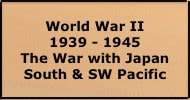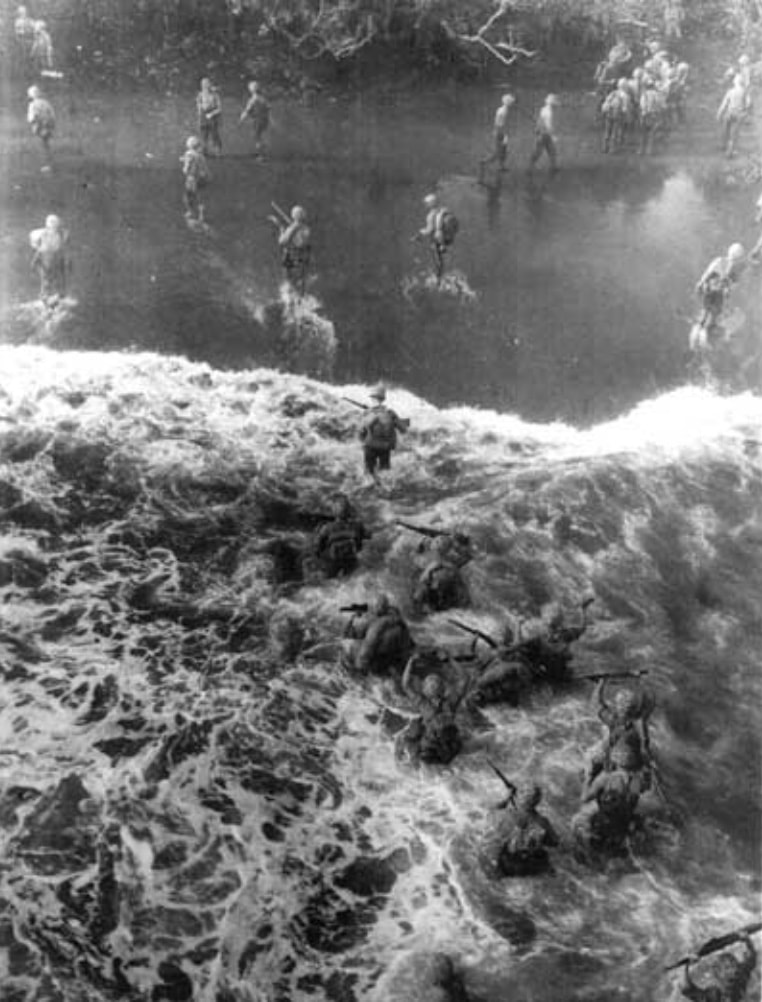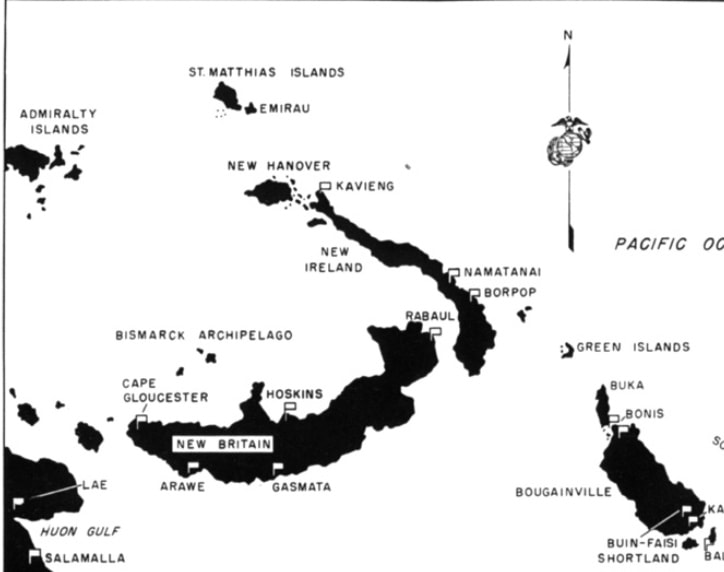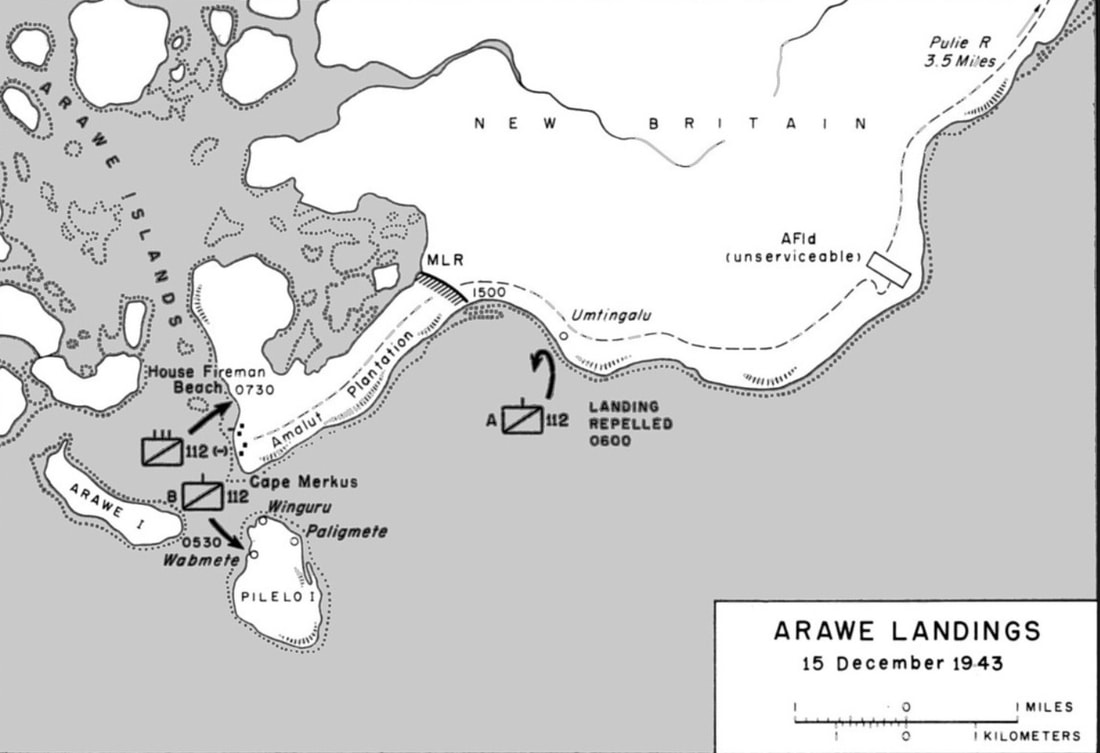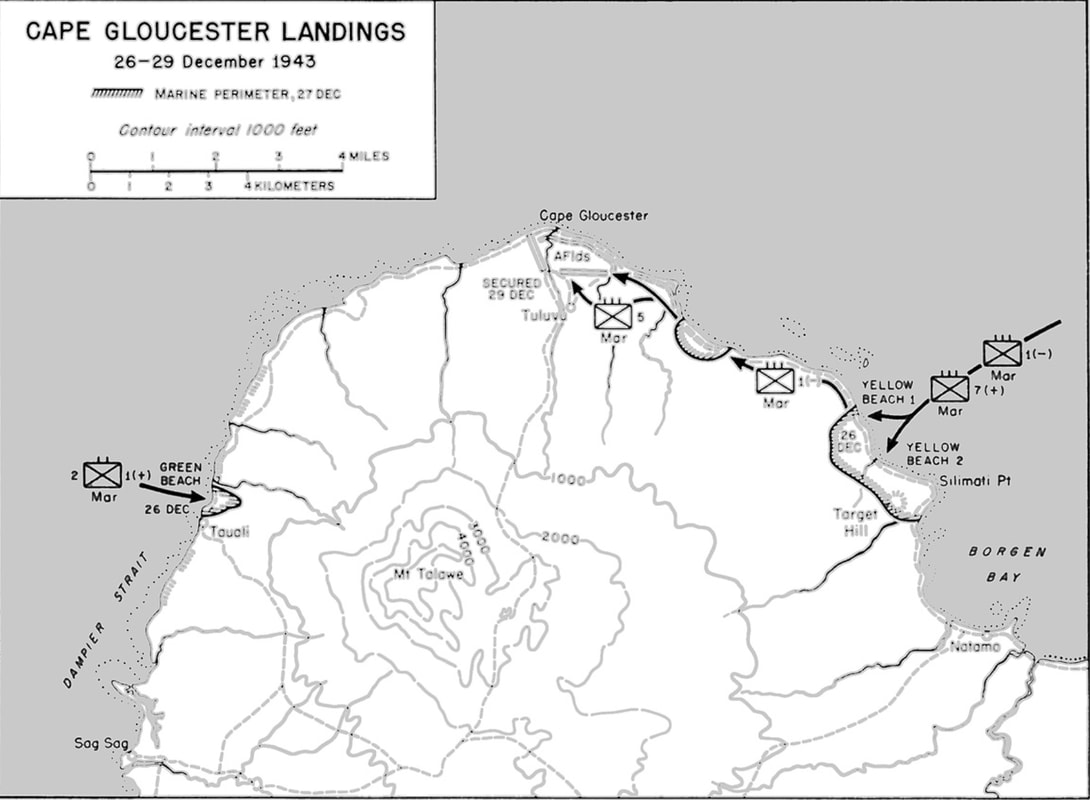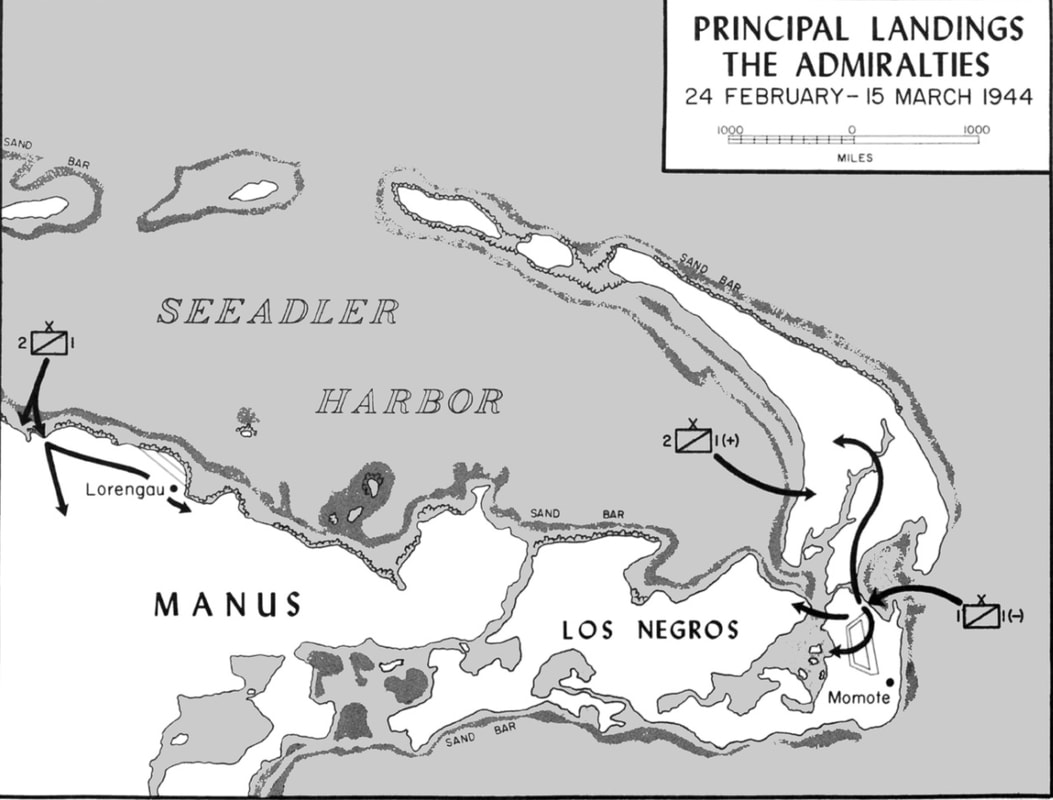bigpigeon.us webpage WWII Japan > South & SW Pacific > Bismarck Archipelago, © 2023 by Robert A. Christiansen, updated by RAC 15 Aug 2023.
The Bismarck Archipelago north of New Guinea consists of the large islands of New Britain and New Ireland, the Admiralty Islands, and various smaller islands.
The actions mentioned herein were the final part of Operation Cartwheel, the encirclement of Rabaul.
The Bismarck Archipelago north of New Guinea consists of the large islands of New Britain and New Ireland, the Admiralty Islands, and various smaller islands.
The actions mentioned herein were the final part of Operation Cartwheel, the encirclement of Rabaul.
Background
|
When the former German Pacific Island colonies were divided among the victors after World War I, the Melanesia colonies were given to Australia to administer. Rabaul, on the northern tip of New Britain Island in the Bismarck Island chain, was the capital of this mandate. Rabaul had a magnificent harbor, with sheltered access from the north and to the south. Early in 1942, Japanese forces overwhelmed the Australian battalion defending Rabaul. The Japanese soon developed Rabaul into the main Japanese base in the South/Southwest Pacific.
|
For nearly a year, from June 1943 to March of 1944, American, Australian and New Zealand military actions in the South and Southwest Pacific surrounded Rabaul with air and naval bases. This, combined with bombing raids on Rabaul, rendered Rabaul impotent and made an amphibious attack on Rabaul unnecessary. These actions neutralizing Rabaul, in the Solomons, on eastern New Guinea, and on southern New Britain and the Admiralty Islands, were collectively called Operation Cartwheel.
Below I list the major Operation Cartwheel amphibious landings in the Bismarck and Admiralty Islands.
Below I list the major Operation Cartwheel amphibious landings in the Bismarck and Admiralty Islands.
Arawe, New Britain, 15 Dec 1943 - 24 Feb 1944
|
Before the larger Cape Gloucester landing in western New Britain, the 112th Cavalry Regiment landed at Arawe to the southeast in a diversionary attack. As the accompanying map shows, Troop A's landing was repelled by Japanese machine gun fire that sank twelve of their fifteen rubber boats. The destroyer Shaw suppressed the enemy fire and Troop A survivors were rescued by the SC-699, a small submarine chaser.
Incidentally, just over two two years earlier the Shaw had exploded at Pearl Harbor during the Japanese attack. A photograph of the Shaw exploding is one of the iconic photos of the War with Japan. 118 men died in the 112th Cavalry Regiment's baptism of fire. |
Cape Gloucester, New Britain, 26 Dec 1943 - 15 Jan 1944
The Admiralty Islands, 24 Feb 1944 - 18 May 1944
|
Inaccurate intelligence suggested that the Japanese had abandoned the Admiralty Islands. Unfortunately, the 1st Cavalry Division encountered moderate but persistent Japanese resistance after landing.
The Admiralties cost 326 American dead. However, Seeadler Harbor and Momote airfield became important American bases. |
Operation Cartwheel included a lightly-opposed landing by New Zealand troops on the Green Islands on 15 February 1944 and an unopposed landing by the US Marine Corps on Emirau Island on 20 March 1944.
On 18 May 1944, the Admiralty Islands Campaign concluded, and Operation Cartwheel ended. Admiral Nimitz could now focus on the ongoing US Central Pacific Campaign, while General MacArthur might now devote his full attention to the drive towards the Philippines in the Southwest Pacific.
On 18 May 1944, the Admiralty Islands Campaign concluded, and Operation Cartwheel ended. Admiral Nimitz could now focus on the ongoing US Central Pacific Campaign, while General MacArthur might now devote his full attention to the drive towards the Philippines in the Southwest Pacific.
Sources for Big Pigeon's South & SW Pacific > Bismarck Archipelago webpage:
Pottawattamie Area WWII Dead - South & SW Pacific > Bismarck Archipelago:
† Armentrout, Russell Marion, SN 37-656-533, US Army, Shelby Co.
- The webpage header photo, Cape Gloucester showing Marines moving ashore from a beached LST is courtesy of the National Park Service.
- The Bismarck and Admiralty Islands Area map is taken from the beginning of the USMC Historical Monograph Marines in the Central Solomons.
Pottawattamie Area WWII Dead - South & SW Pacific > Bismarck Archipelago:
- Taken from the bigpigeon.us WWII Dead module.
† Armentrout, Russell Marion, SN 37-656-533, US Army, Shelby Co.
- Troop C, 12th Cavalry Regt., 1st Cavalry Div.; KIA 20 Mar 1944 on Los Negros Is., Admiralty Is., SW Pacific; Operation Cartwheel - South & SW Pacific > Bismarck Archipelago.
- Co. H., 147th Inf. Regt.; DNB 31 May 1944 Emirau Is. west of New Britain; South & SW Pacific > Bismarck Archipelago.
